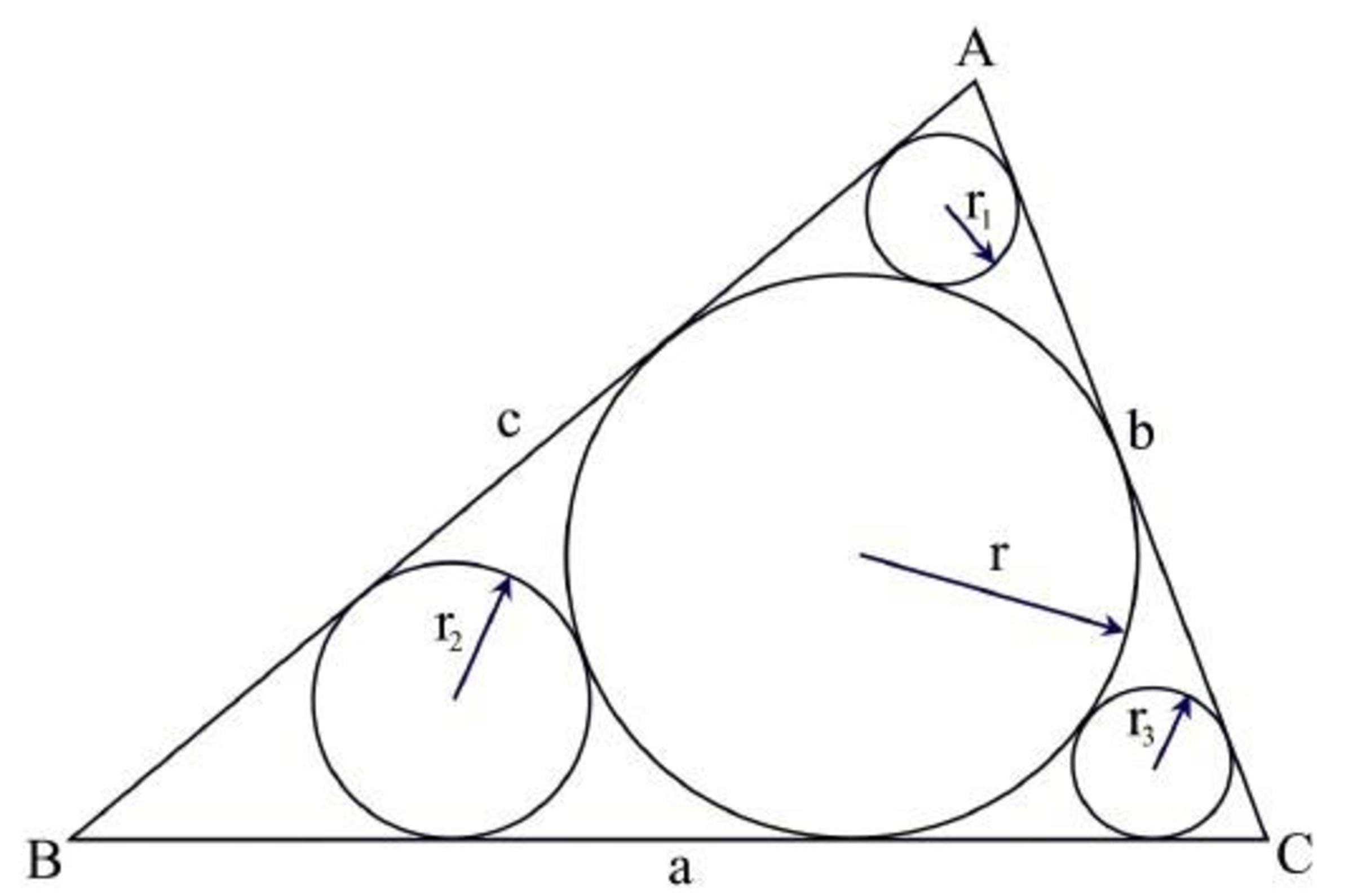Find the smallest possible inradius

Inside triangle ABC there are three circles with radii \(r_1\), \(r_2\), and \(r_3\). Each is tangent to two sides of the triangle and to its incircle. The incircle has radius \(r\). All of \(r\), \(r_1\), \(r_2\), and \(r_3\) are distinct perfect square integers. Find the smallest possible value of inradius \(r\).
I hope you enjoy this problem.
No vote yet
10 votes
Easy Math Editor
This discussion board is a place to discuss our Daily Challenges and the math and science related to those challenges. Explanations are more than just a solution — they should explain the steps and thinking strategies that you used to obtain the solution. Comments should further the discussion of math and science.
When posting on Brilliant:
*italics*or_italics_**bold**or__bold__paragraph 1
paragraph 2
[example link](https://brilliant.org)> This is a quote# I indented these lines # 4 spaces, and now they show # up as a code block. print "hello world"\(...\)or\[...\]to ensure proper formatting.2 \times 32^{34}a_{i-1}\frac{2}{3}\sqrt{2}\sum_{i=1}^3\sin \theta\boxed{123}Comments
r = 81, r1 = 9, r2 = 36, r3 = 49 is valid, and is probably the smallest possible value (pending some checks on the smaller cases) , by some trigonometric/algebraic arguments.
Letting r, r1, r2, r3 be x^2, a^2, b^2, c^2 respectively, you can force out x^2 = ab + bc + ca; that's all i'll let on
edit: these a,b,c are different from the diagram. (the a,b,c in there are irrelevant). To make it clearer:
r^2 = rt(r1r2) + rt(r2r3) + rt(r3*r1)
Is it that r=81, r1=16, r2=36, r3=49??
1/r=1/r1+1/r2+1/r3
Hmm.. Gabriel. If r = 81, r1= 9, r2 = 36, and r3 = 49 and by your post: r = x^2 r1 = a^2 r2 = b^2 and r3 =c^2. Wouldn't that make each of the other variables (x, a, b, and c) be the smallest values? As in 81 = x^2 so x = 9, 9= a^2 so a =3, 36 = b^2 so be = 6, and 49 = c^2 so c= 7. With that would those be the new smallest values? Also by looking at the picture we can say that r1 and r3 are the same because the triangle is isosceles. In that case is r1 = 9, r3 = 9... And a and c = 3? So if they were not the same, Plugging the numbers in fit a b and c (3,6,7) we can find the angles of each side. So A = 60.038 B = 92.729 and C = 27.271. From there you can go deeper and find the arc length then find the true radius of each...? I may have done something wrong but, this is just my inquiry for this question.
Log in to reply
x^2 = ab + bc + ca
81 = 36 + 67 + 7*3
but this does not imply
x = rt(ab) + rt(bc) + rt(ca)
rt(18) + rt(42) + rt(21) does not equal 9
Is it about Descarte's Theorem?